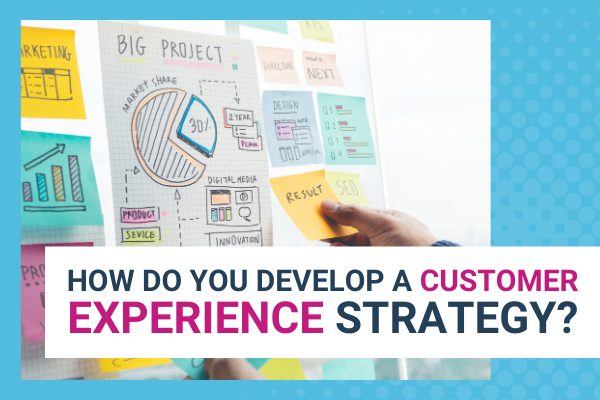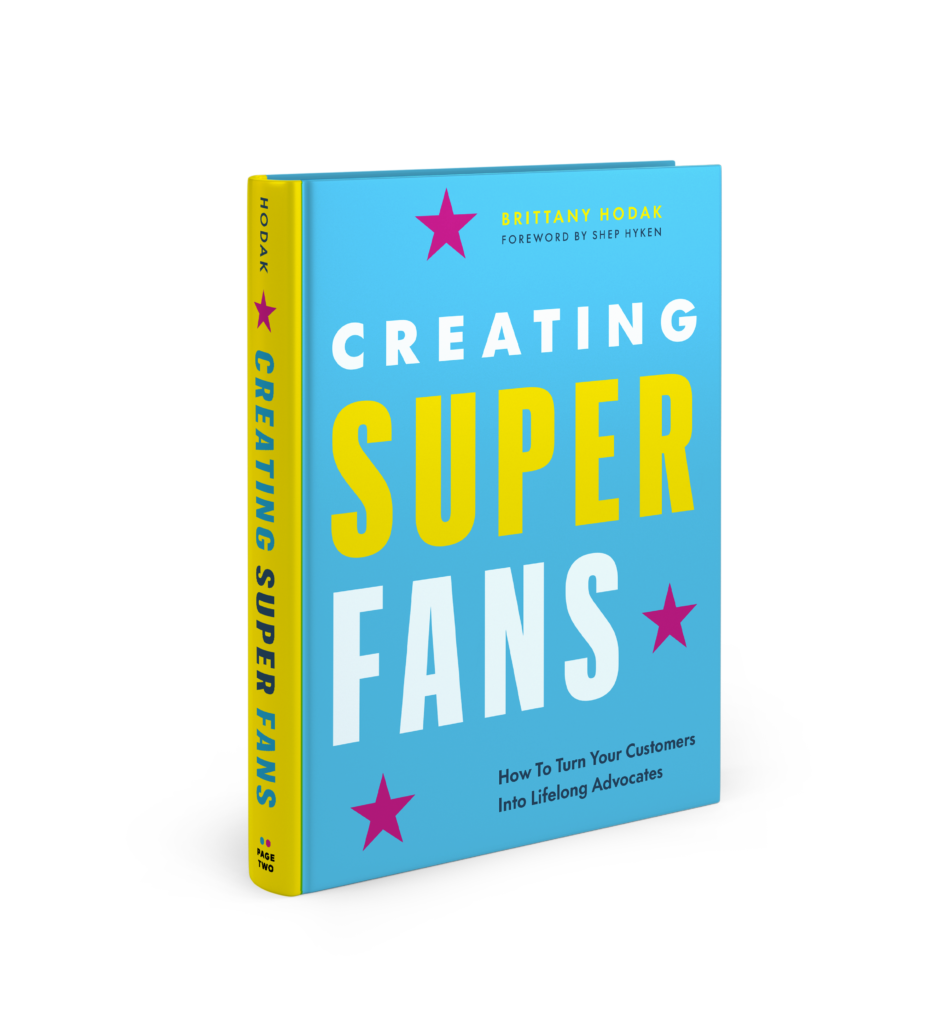Most businesses nowadays understand they need to focus on customer service, but they don’t know where to begin. Superior customer experience is a part of any successful brand, but it takes know-how, experience, and a customer-first approach to take the first steps. It’s not as simple as other parts of your brand identity, like your customer support.
Nowadays, your customers have expectations through the roof. They’ve come to expect a high-level experience from their first interaction with your brand to the last. In fact, in 2021, a reported 81% of marketers expect to compete solely on customer experience (CX). Compared to 36% in 2010, it’s easy to see how this has changed in just a decade. It’s not slowing down anytime soon.
It’s simple math. Brands that aren’t afraid to offer a superior experience are likely to see greater revenue than brands that don’t. That means developing a customer experience strategy should be your top priority.
With that in mind. how do you begin? This guide will get you there, starting with what it means to have a CX strategy and how to build your own customized for your brand.
What is a customer experience strategy?
First, a lot of business owners get confused about the definition of a customer experience strategy. It’s easy to confuse with other important parts of your brand, like your customer service strategy. However, a customer experience (CX) strategy is the perception customers have after continuous experiences with your brand.
In other words, it’s the sum of all of your interactions with customers. From the first time they learn about your brand to their post-purchase decisions, your CX strategy is the result of all of these efforts.
Your customer experience strategy is your set of actionable steps to deliver a high-quality, positive experience for every customer. Too many brands only focus on the earliest interactions when it comes to CX. However, every stage of the customer journey deserves equal attention if you want a powerful, memorable strategy that delivers real-world results.
Why is a customer experience strategy important?
Next, why is it so essential to have a customer experience strategy? Isn’t focusing on your CX enough on its own? In short, no. It’s not. Just about every brand is giving some attention to their experience. By investing in a compelling, actionable strategy, you find key ways to stand out when it matters the most.
Here’s why your CX strategy is important:
- Revenue: By focusing on your customer experience strategy, you’re likely to see a 1.5x higher year-over-year growth, including more repeat purchases and a higher customer lifetime value.
- Higher price tag: Brands that invest in their CX charge more. Customers reportedly will pay a 16% price premium for better service.
- Loyalty: People trust bands they have positive experiences with. If you want to create loyal superfans, you need a strong CX strategy.
- Reduce churn: Similarly, more than 33% of Americans switch companies because of one poor customer experience. By focusing on your experience, you reduce your customer churn.
Achieving any of the above without a customer experience strategy would be impossible. Luckily, it’s not complicated to develop a CX strategy designed with your brand and your audience in mind.
How do you develop a customer experience strategy?
Now, it’s time to develop a customer experience strategy once and for all. The right CX strategy doesn’t appear from thin air. It happens when you create a strategy aligned around your mission and how to best serve your customers.
The Superfans System is at the heart of any strategy, and it’s easy to replicate these systems for your own brand. Follow these key steps below to develop a customer experience strategy that’s right for you.
Start With Your Story
Before you serve your customers, you need to know your story. Storytelling is the foundation of branding, and humans have connected through stories since the dawn of time. According to Harvard Business, 95% of customers buy based on emotions, not logic. This is why your stories have the power to take your brand further. Every brand has a story. It’s up to you to share this story in a compelling, meaningful way.
To start, define your mission and your brand personality. What are your core values, and how do they appeal to your customers? Who are the main characters in your story, and what role do they play?
Apple is an example of a brand that knows how to tell a compelling story. It was Steve Jobs who famously said “It’s better to be a pirate than to join the navy.” It’s this attitude for risktaking and paving one’s own path that inspires each of Apple’s launches and marketing efforts.
Their famous 1984 Superbowl ad directed by Ridley Scott was inspired by George Orwell’s 1984 dystopian novel. The ad is the first to announce the Macintosh personal computer, and it emphasizes a break from the norm with this launch. In the ad, a woman breaks free from the tyranny of her oppressor, liberating everyone to create their own path. Like the newly designed computer, this messaging is in line with the brand story.
Understand Your Customers’ Story
If you want to understand how to give outstanding customer experience, you first need to know what your customers expect. This means identifying their pain points, recognizing key demographics, and putting yourself in your customer’s shoes.
It’s not enough to create a customer avatar and throw a dart blindly at this page. You need to really listen to what your customers are telling you and what they’re trying to tell you through customer feedback. Only once you analyze this data will you understand the path forward for your customer experience strategy.
To see this in action, look at one of the leading eyeglass retailers. Warby Parker knew that finding the right pair of glasses could be expensive, time-consuming, and inconvenient for customers. They addressed these specific pain points to create eyeglasses their customers could try on at home risk-free, helping them make a decision without having to leave the house. Their feedback makes it even clearer—their customers love this!
Personalize
Once you understand your story and your customer stories, you’re ready to create superfan magic. You want your customers to feel special, and this means you can’t have a one-size-fits-all approach. You should treat new users differently than veteran users, and you need to respond to customer concerns in a personalized way.
A good rule of thumb is to always keep your customer experience strategy personal, not transactional. Too many brands focus on what they want from customers and not the other way around. Instead of aggressively selling, be helpful and conversational. You want your customers to trust you and feel welcome at every stage.
Netflix is one of the best examples of a brand that knows how to personalize the experience. You’ve likely noticed this with your own streaming account on the platform, but it’s a lot more advanced than it looks at first glance. In order to provide custom recommendations, Netflix runs 250 A/B tests per year and harvests information from over 300 million member profiles.
Unlike other brands, Netflix takes personalization a step further. Though it operates with a powerful algorithm, it never treats streamers like a number in a complex formula. Instead, each interaction is created to feel like a friend is sharing their favorite suggestions, building trust with every watch.
Exceed Customer Expectations
Next, great brands know it’s not enough to meet customer expectations. They need to exceed them. Learning how to set and exceed these customer expectations with your system is key to creating loyal superfans.
To start, you need to set realistic customer expectations that are aligned with deliverable forms of customer service and experience. When your whole team works in harmony with your brand message, you truly stand out.
This often comes down to one simple thing: being proactive, not reactive. Customers don’t want to contact customer support. They’d prefer to have no problems whatsoever. Customer service is reactive while customer experience is proactive. By personalizing each interaction, doing the unexpected to help customers, and nurturing new users, you can continue to exceed expectations.
The haircare brand Function of Beauty knows how to exceed customer expectations. Because they know shopping for customized hair products can be confusing, they designed a hair quiz to build a specific formula for each individual shopper. When paired with a simple contact feature, helpful hair guides, and easy-to-navigate reviews, customers have an engaging, educational experience with each interaction.
Repeat!
Last but not least, repetition and automation are the final skills to master. If you’re trying to build superfans at scale, you can’t do it all on your own. You need to leverage CRMs, social media, and other systems to make this process second-nature for your team.
When repeating and streamlining your strategy, consider the following questions:
- Attract: How do you continue to attract new customers?
- Feedback: What process do you have for seeking new feedback and analyzing this data?
- Tools: What are the best tools for your business, and how do they better serve your team?
- Customer-first: Most importantly, how can you adopt a customer-first approach to each goal, plan, and project?
Things won’t always work perfectly. You’ll make mistakes as a brand, and that’s completely normal and okay. As long as you’re willing to learn from where you’ve been, your customer experience strategy will take you farther in the future.
An example of a brand that consistently scores highly with Forrester’s CX Index is Ally Bank. Not only was Ally one of the first banks to focus on the mobile experience, but it has always placed priority on personalization. Ally had a simple mission: to create online and mobile banking platforms that are simple, better, and beautiful.
Today, Ally has over 4.5 million customers and is one of the largest banks in the country. Though it was once considered revolutionary to operate completely online with no physical branches, their emphasis on communication and transparency made this possible. Their three brand principles say it best, “Talk straight. Do right. Be obviously better.”
Conclusion
Ultimately, if you want to make superfan magic, you need to find the balance between your story and your customers’ story. When you find this key connection, you’ve discovered the golden ticket to a compelling, actionable customer experience.
While it’s a good idea to keep an eye on the masters in this space, don’t be afraid to tread your own path when it comes to customer experience. This isn’t one-size-fits-all, and what works for one brand might not work for you. Innovation is always on the horizon, and every industry is holding its breath for the next ‘big thing’ to take charge. If you craft the right customer experience strategy, that ‘big thing’ might be your brand.





